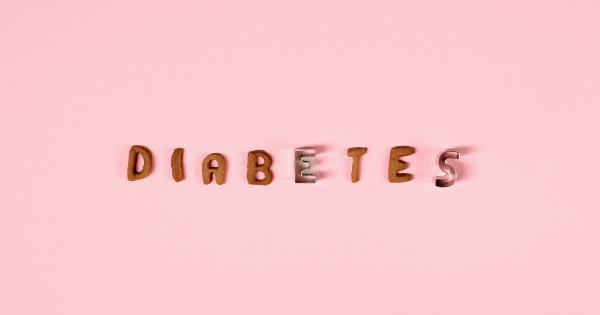When it comes to losing weight and improving overall health, there is no shortage of diets to choose from. However, not all diets are created equal, and what works for one person may not work for another.
With that said, it’s always beneficial to stay up-to-date on the latest diet trends and research. In this article, we present the 2013 list of must-try diets that gained popularity and showed promising results.
1. The Mediterranean Diet
The Mediterranean diet is inspired by the traditional eating habits of countries bordering the Mediterranean Sea. It emphasizes the consumption of fruits, vegetables, whole grains, legumes, and healthy fats such as olive oil.
This diet also includes moderate amounts of fish, poultry, and dairy products while limiting red meat and processed foods. Numerous studies have linked the Mediterranean diet to various health benefits, including improved heart health and reduced risk of chronic diseases.
2. The Paleo Diet
The Paleo diet, also known as the caveman diet, focuses on eating foods that our ancestors consumed during the Paleolithic era.
This means predominantly consuming lean meats, fish, fruits, vegetables, nuts, and seeds, while avoiding grains, legumes, dairy products, processed foods, and added sugars. Proponents of the Paleo diet believe that our bodies are genetically adapted to this type of diet and that it can lead to weight loss, improved digestion, and enhanced overall health.
3. The DASH Diet
The DASH (Dietary Approaches to Stop Hypertension) diet was initially designed to help lower blood pressure. However, it has gained recognition as an effective diet for weight loss and general health improvement.
The DASH diet primarily focuses on consuming fruits, vegetables, whole grains, lean proteins, and low-fat dairy products while minimizing sodium, saturated fats, and added sugars. Its emphasis on nutrient-dense foods makes it a well-rounded and balanced diet.
4. The Atkins Diet
The Atkins diet is a low-carbohydrate diet that places emphasis on consuming high amounts of protein and fats. It involves restricting carbohydrate intake to induce a state of ketosis, where the body burns fat for fuel instead of carbohydrates.
The diet has different phases, with the initial phase being the strictest and gradually reintroducing carbs as you progress. While the Atkins diet has been criticized for its high saturated fat content, it has shown to be effective for weight loss and controlling blood sugar levels in some individuals.
5. The Flexitarian Diet
The flexitarian diet is a flexible approach to vegetarianism, allowing for occasional meat consumption while primarily focusing on plant-based foods.
This diet encourages individuals to increase their intake of fruits, vegetables, whole grains, and legumes while reducing their consumption of meat and animal products. The flexitarian approach offers the health benefits associated with a plant-based diet while still allowing flexibility for personal preferences and occasional indulgences.
6. The Weight Watchers Diet
Weight Watchers is a popular weight loss program that focuses on portion control and a balanced diet. It assigns point values to different foods based on their nutritional content, and individuals are given a daily point target to meet.
Weight Watchers encourages the consumption of whole foods, lean proteins, fruits, and vegetables while promoting moderation and mindful eating. The program’s supportive community and accountability features have contributed to its long-standing success.
7. The Flex Diet
The Flex Diet, developed by Dr. James Beckerman, focuses on flexibility and individualization. It aims to provide a sustainable approach to weight loss and overall health by combining science, psychology, and personalization.
The diet emphasizes the importance of whole, unprocessed foods while allowing room for occasional indulgences. It also encourages adopting healthy habits such as regular physical activity and stress management.
8. The Zone Diet
The Zone diet, created by Dr. Barry Sears, focuses on balancing macronutrients to promote weight loss and optimal health.
It suggests consuming a specific ratio of carbohydrates, proteins, and fats at every meal to control insulin levels and stabilize blood sugar. The diet emphasizes unprocessed carbohydrates, lean proteins, and healthy fats while discouraging refined sugars and highly processed foods.
9. The South Beach Diet
The South Beach Diet, developed by cardiologist Dr. Arthur Agatston, aims to promote weight loss and improve heart health. It emphasizes consuming lean proteins, healthy fats, low-glycemic index carbohydrates, and high-fiber foods.
The diet consists of three phases, with the initial phase being the most restrictive, gradually introducing more food options as you progress. The South Beach Diet also encourages regular physical activity and teaches individuals about making healthier choices for long-term success.
10. The Vegan Diet
The vegan diet excludes all animal products, including meat, dairy, eggs, and honey. It focuses on consuming plant-based foods such as fruits, vegetables, whole grains, legumes, nuts, and seeds.
While primarily followed for ethical and environmental reasons, the vegan diet can also offer numerous health benefits such as weight loss, improved digestion, and reduced risk of certain diseases. However, it requires careful planning to ensure adequate nutrient intake, particularly vitamins B12 and D and omega-3 fatty acids.
Conclusion
With a plethora of diets to choose from, finding the right one can be overwhelming. The 2013 list of must-try diets showcased a range of approaches, from traditional Mediterranean eating to the caveman-inspired Paleo diet.
Whether you’re looking for weight loss, improved health, or a combination of both, it’s important to find a diet that suits your individual needs, preferences, and lifestyle. Remember, sustainable changes to your eating habits paired with regular physical activity will set you on the path to long-term success and overall well-being.


























